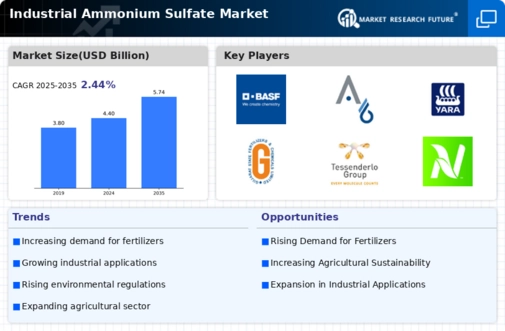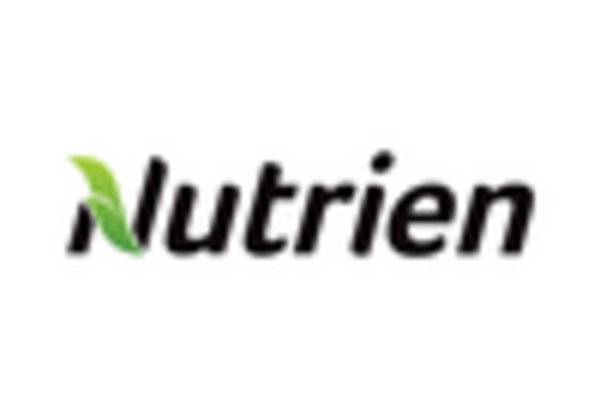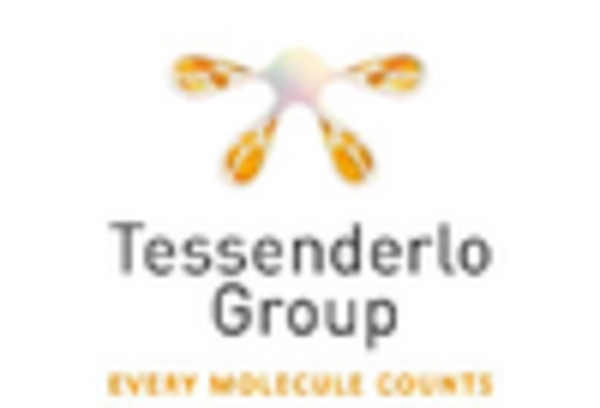Rising Demand for Fertilizers
The increasing global population and the corresponding rise in food demand are driving the need for fertilizers, particularly in the Industrial Ammonium Sulfate Market. As agricultural practices evolve, there is a notable shift towards nitrogen-based fertilizers, with ammonium sulfate being a preferred choice due to its dual role as a nutrient source and soil conditioner. Recent data indicates that the fertilizer market is projected to grow at a compound annual growth rate of approximately 3.5% over the next five years. This growth is likely to bolster the Industrial Ammonium Sulfate Market, as farmers seek efficient solutions to enhance crop yields and soil health.
Growth in Industrial Applications
The Industrial Ammonium Sulfate Market is witnessing a surge in demand from various industrial applications, including the production of chemicals, pharmaceuticals, and food processing. Ammonium sulfate serves as a key ingredient in the manufacturing of certain chemicals and is utilized in the food industry as a food additive. The market for industrial chemicals is anticipated to expand, with projections indicating a growth rate of around 4% annually. This trend suggests that the Industrial Ammonium Sulfate Market could benefit significantly from the diversification of its applications, thereby enhancing its overall market potential.
Increasing Awareness of Soil Health
There is a growing awareness among farmers and agricultural stakeholders regarding the importance of soil health, which is significantly influencing the Industrial Ammonium Sulfate Market. Ammonium sulfate is recognized for its ability to improve soil structure and nutrient availability, making it an attractive option for sustainable farming practices. As educational initiatives and research highlight the benefits of maintaining healthy soils, the demand for ammonium sulfate as a soil amendment is likely to rise. This trend may contribute to the overall growth of the Industrial Ammonium Sulfate Market, as more farmers adopt practices that prioritize soil health.
Technological Innovations in Production
Technological advancements in the production of ammonium sulfate are playing a crucial role in shaping the Industrial Ammonium Sulfate Market. Innovations such as improved synthesis methods and more efficient production processes are likely to reduce costs and enhance product quality. These advancements may lead to increased production capacities, allowing manufacturers to meet the rising demand more effectively. As production technologies evolve, the Industrial Ammonium Sulfate Market could experience a shift towards more sustainable and economically viable practices, further solidifying its position in the fertilizer market.
Environmental Regulations Favoring Ammonium Sulfate
Stringent environmental regulations are increasingly favoring the use of ammonium sulfate in various applications, particularly in the Industrial Ammonium Sulfate Market. Governments are promoting sustainable practices that minimize environmental impact, leading to a preference for fertilizers that reduce nitrogen leaching and improve soil quality. Ammonium sulfate, being less harmful to the environment compared to other nitrogen fertilizers, is gaining traction. The regulatory landscape is expected to continue evolving, potentially increasing the market share of ammonium sulfate in the fertilizer segment, as industries adapt to comply with these regulations.

















Leave a Comment